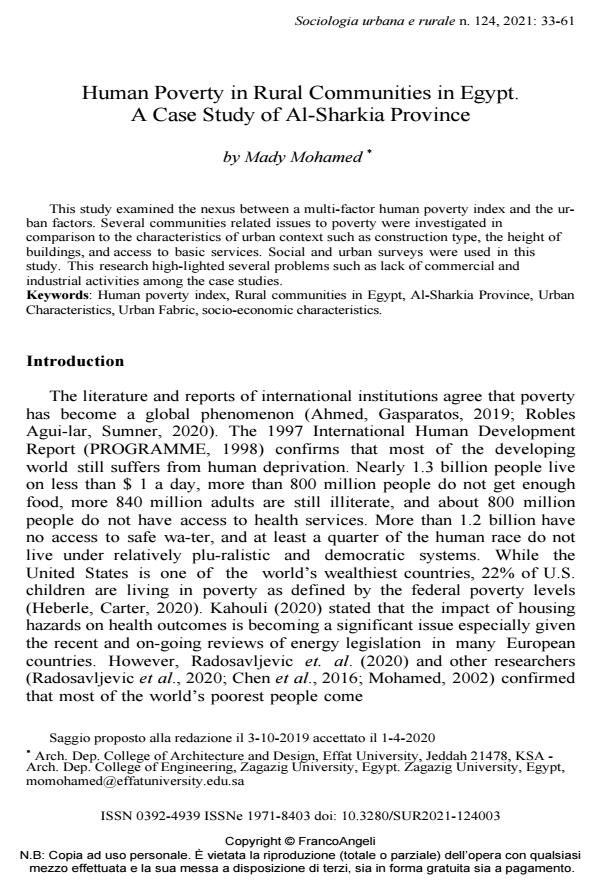Human Poverty in Rural Communities in Egypt. A Case Study of Al-Sharkia Province
Journal title SOCIOLOGIA URBANA E RURALE
Author/s Mady Mohamed
Publishing Year 2021 Issue 2021/124
Language English Pages 29 P. 33-61 File size 568 KB
DOI 10.3280/SUR2021-124003
DOI is like a bar code for intellectual property: to have more infomation
click here
Below, you can see the article first page
If you want to buy this article in PDF format, you can do it, following the instructions to buy download credits

FrancoAngeli is member of Publishers International Linking Association, Inc (PILA), a not-for-profit association which run the CrossRef service enabling links to and from online scholarly content.
This study examined the nexus between a multi-factor human poverty index and the ur-ban factors. Several communities related issues to poverty were investigated in comparison to the characteristics of urban context such as construction type, the height of buildings, and ac-cess to basic services. Social and urban surveys were used in this study. This research high-lighted several problems such as lack of commercial and industrial activities among the case studies.
Keywords: Human poverty index, Rural communities in Egypt, Al-Sharkia Province, Urban Characteristics, Urban Fabric, socio-economic characteristics.
- Engineering Solutions Toward Sustainable Development Shaimaa R. Nosier, Nancy M. Badawy, pp.593 (ISBN:978-3-031-46490-4)
- Cities of the Future Amani Ahmad Aburuzaiza, Mady Mohamed, Tarek Saad Ragab, pp.209 (ISBN:978-3-031-15459-1)
Mady Mohamed, Human Poverty in Rural Communities in Egypt. A Case Study of Al-Sharkia Province in "SOCIOLOGIA URBANA E RURALE" 124/2021, pp 33-61, DOI: 10.3280/SUR2021-124003